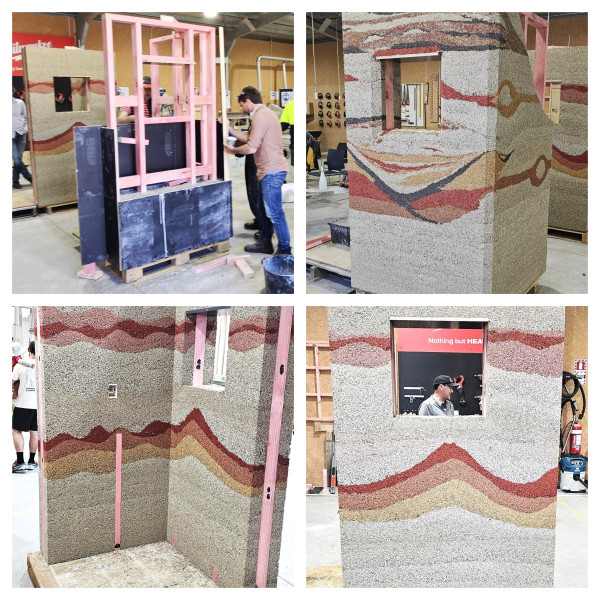Hemp for housing workshop at WITT
Hemp fibre is under the spotlight as a potential new commercial crop in Taranaki and one of the main uses is for building houses. Construction students at WITT gained insights and experience on building with ‘hempcrete’ in a recent workshop on campus.
The Hempcrete Construction Course was coordinated by Te Puna Umanga Venture Taranaki in partnership with WITT. Construction carpentry tutor, Phil Richardson-Jones, says it was a great learning experience for young builders to become aware of new materials and technology in sustainable building and gain hands-on experience in using it.
Alongside local builders, architects, and community groups, the students used their carpentry skills to build a timber framework so that participants could practice mixing, casting and building with hempcrete.
As an experienced builder and joiner, Phil is impressed with the numerous qualities and benefits of hemp and its strength and durability. Used for centuries in building, fabric and rope, hemp is one of the most sustainable materials. It is fast growing, requires no pesticides or herbicides and is carbon negative. Lightweight, breathable, thermally efficient and naturally non-toxic, it’s suitable for insulation, floors, roofing and for making new or upgrading existing structures.
These days, hemp products – based on hemp oil, seeds and powder - are revered as nutritionally beneficial and found in a range of food and beauty items.
Hempcrete is made from mulched hemp hurd (the woody inner parts of the hemp stalks), mixed with a lime-based binder to form a slurry which is then put into a framework.

Hemp hub in Taranaki
While hemp is more widely used in Australia for housing and construction, it is still very new here. Phil says he can see the potential for Taranaki to become a ‘hemp hub’ of production, thanks to Venture Taranaki’s Branching Out project to encourage diversification in food and fibre alternatives to traditional land use. Hemp is one of the crops currently being trialled, along with kumara, garlic and angelica.
“This course built on our promising hemp growing trials through our Branching Out project, which has identified a significant opportunity for Taranaki to become the North Island hub for industrial hemp fibre production and innovation, and a key supplier of hurd fibre for hempcrete and other applications,” says Michelle Bauer, Branching Out Project Lead at Te Puna Umanga Venture Taranaki.
With four houses already constructed from hempcrete in Taranaki, more than any other region, and with more in the pipeline, the region is leading the way in demonstrating the potential of hempcrete within New Zealand.
Sean Markham, Talent and Skills Advisor at Te Puna Umanga Venture Taranaki says, “Recognising the region’s growing expertise in hemp construction, we are deliberately building capability across our construction workforce through a series of workshops that have been really well attended. These workshops give qualified tradespeople, architects, and interested community groups the chance to work directly with emerging materials and techniques, helping them stay ahead of industry shifts and strengthening the skills pipeline Taranaki will need to leverage this emerging industry.”
“Hemp is the most amazing product,” says Phil, who sees a bright future with hempcrete as part of the solution for more affordable, sustainable housing.
Captions: (top) Phil Richardson-Jones with his carpentry students at the hempcrete workshop on campus and (below) The frame that students made for the hempcrete demo.